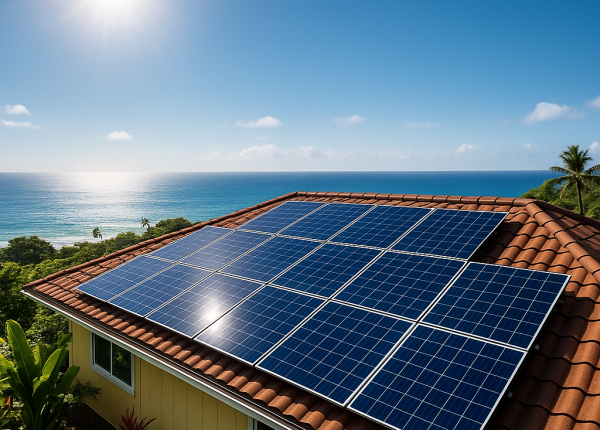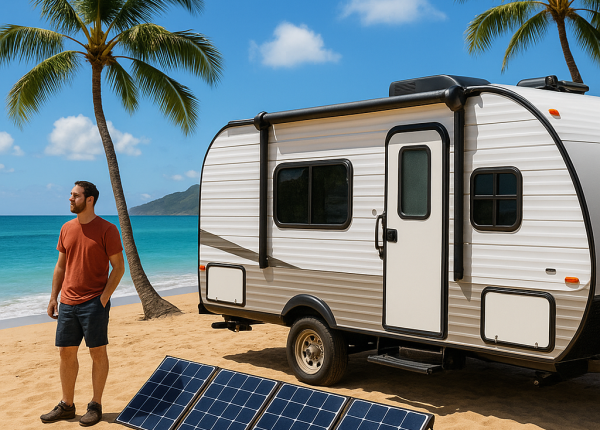Why Solar Energy Is the Future of Power
Why Hawaii Is Leading the Solar Energy Revolution
For decades, Hawaii has been known for its natural beauty and strong environmental values, and now it is becoming a global leader in renewable energy Hawaii initiatives powered by solar. Across the islands, homeowners and businesses are turning to solar not just as an alternative option but as the foundation of a more sustainable energy future. As electricity costs rise and climate concerns increase, solar energy offers a reliable, practical way to cut expenses and reduce dependence on imported fossil fuels. The shift is reshaping how communities think about power and long-term energy independence.
The future of solar energy in Hawaii continues to gain momentum as more residents adopt solar panels and battery storage systems designed for local conditions. With programs, incentives, and growing awareness pushing adoption forward, Hawaii is demonstrating how a modern energy transition can work on a statewide scale.
Understanding the Future of Solar Energy in Hawaii
Solar energy is more than a renewable resource; it is the backbone of Hawaii’s clean energy transformation. Thanks to abundant sunshine, solar power Hawaii systems are well positioned to generate consistent electricity throughout the year, supporting the state’s goal of reaching 100% clean energy by 2045. Solar installations have steadily increased as technology improves and incentives expand.
Key Benefits of Solar Energy
- Reduces dependence on imported oil and fossil fuels
- Decreases household and business electricity costs
- Supports statewide sustainability efforts
- Promotes energy resilience and independence
Challenges such as grid capacity and storage limitations still exist, but statewide leadership continues to drive innovation. This example sets the stage for other regions looking to adopt similar renewable strategies.
How Solar Energy Is Transforming Hawaii’s Power Landscape
The future of solar energy is being shaped by advancements in solar technology, affordability, and increasing demand for renewable power. These changes are influencing how local residents generate, store, and manage their electricity.
Solar Panel Efficiency Improvements Shaping Energy Use
Solar panel technology has advanced significantly, allowing modern systems to convert more sunlight into electricity even in partially shaded areas. Understanding how do solar panels work and how solar panels convert sunlight into electricity highlights just how far the technology has come. With innovations like bifacial and perovskite panels, solar installations are becoming even more effective for homes with limited roof space. These improvements help increase return on investment for homeowners and businesses while supporting long-term sustainability.
Energy Storage Innovations Driving Grid Stability
Battery storage plays a major role in Hawaii’s solar future. Systems for solar battery storage Hawaii residents rely on allow households to store excess power during sunny hours and use it at night, reducing dependence on the grid. This increases energy security during outages and helps balance supply and demand.
Government Incentives Encouraging Solar Adoption
Tax credits, rebates, and federal programs continue to make solar energy Hawaii systems more affordable. Incentives help reduce upfront installation costs for both residential and commercial customers. These financial benefits are further supported by net metering programs, which allow customers to send excess energy to the grid.
Local Community Efforts Advancing Clean Energy Goals
Community-driven solar projects are gaining traction across the islands. Schools, nonprofits, and neighborhood associations are launching local energy initiatives that promote sustainability and shared responsibility. Residents can stay informed through educational resources like solar energy pros and cons Hawaii.
Economic and Environmental Impact of Solar Energy Growth
Solar energy adoption supports job creation in installation, maintenance, and related services. It reduces greenhouse gas emissions and decreases reliance on imported oil, delivering widespread economic and environmental benefits. As system costs continue to drop, Hawaii moves closer to a more resilient, affordable energy future.
Real-World Applications of Solar Power in Hawaii
Solar power is producing measurable results across residential and commercial sectors. Homeowners on islands like Oahu and Maui have seen their electricity bills drop dramatically, often by as much as 70%. Businesses, including hotels, farms, and schools, are adopting solar solutions to reduce operating costs and support sustainable practices. Several resorts now operate partly on solar power, appealing to travelers who value environmentally responsible operations.
You can explore how local installations integrate solar water heating as part of renewable lifestyle changes.
Best Practices for Maximizing Solar Energy Efficiency
Optimizing solar system performance is key to long-term energy savings and reliability. Both homeowners and businesses can follow several best practices to improve efficiency.
Conduct Regular Maintenance Checks
Inspect solar panels and inverters every six months to ensure they are operating properly. Cleaning away dust, salt, and debris can improve production significantly.
Invest in Quality Components
High-quality solar panels, inverters, and batteries offer better performance and longer lifespans. Local energy solutions, including electrical services, can help ensure proper installation and performance.
Monitor System Performance Digitally
Digital monitoring tools allow users to track energy production and detect issues quickly. Mobile apps and dashboards provide insights that help optimize system efficiency and boost performance.
Leverage Government and Utility Incentives
Stay informed about tax credits, rebates, and net metering programs to reduce overall installation costs.
Work with Certified Solar Professionals
Partnering with licensed solar installation experts ensures compliance with Hawaii’s unique energy regulations and environmental conditions. Complementary services like EV charging integration can enhance system capabilities.
The Bright Future of Solar Energy in Hawaii
Hawaii’s dedication to sustainability positions it as a global leader in solar energy innovation. The future of solar energy continues to grow stronger with improved technology, increased affordability, and expanding community involvement. For more information on solar system options, consider exploring related services like roofing solutions designed for solar installations.
Frequently Asked Questions About the Future of Solar Energy
What makes Hawaii ideal for solar energy?
Hawaii’s location ensures abundant sunshine throughout the year, creating ideal conditions for solar energy generation. High electricity costs and strong clean energy goals also support rapid solar adoption.
How much can homeowners save with solar panels in Hawaii?
Savings can reach up to 70% depending on system size, usage patterns, and available solar incentives Hawaii residents can take advantage of. Pairing solar with storage enhances both savings and energy independence.
Are solar panels effective on cloudy days in Hawaii?
Yes, modern solar panels generate energy even during cloudy conditions, although output is reduced. The islands receive enough sunlight overall to ensure year-round production.
What are the main challenges of solar energy in Hawaii?
Common challenges include grid limitations, storage availability, and initial costs. Continued improvements in battery technology and government incentives help mitigate these issues.
How does solar energy support Hawaii’s clean energy goals?
Solar energy is a key driver of Hawaii’s 2045 clean energy target. It reduces fossil fuel dependency and cuts carbon emissions, supporting a sustainable and resilient energy future.


